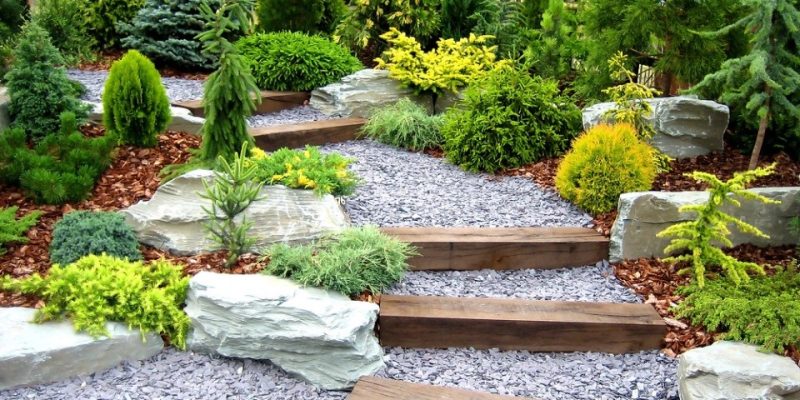Some gardens are simply pleasant to look at, while others feel alive in every sense. The difference often lies in how they connect with the world beyond the fence.
Sustainable landscaping blends beauty with responsibility so the space you create works in harmony with nature and is a joy to spend time in.
Choosing Native Plants
Plants that naturally belong to your local environment are the foundation of an eco-friendly garden.
They’ve evolved to handle Britain’s varied climate, from soft drizzles to the occasional dry spell, meaning they thrive without constant watering, feeding, or fuss.
Lavender and rosemary, for instance, keep their charm through prolonged dry periods, while wild primroses, foxgloves, and cowslips bring seasonal colour with minimal intervention.
Equally important, these plants are resilient to local pests, reducing the need for chemical treatments. That means more bees lazily drifting between blossoms, butterflies adding flashes of colour, and songbirds finding food and shelter.
If you’re unsure where to start, the Royal Horticultural Society’s Plant Finder is invaluable, and local gardening clubs often share tried-and-tested recommendations.
By planting with nature rather than against it, you’ll create a space that feels effortlessly right.
Using Water Wisely
Once your plants are in place, it’s worth thinking about how to keep them healthy with minimal water waste.
Drip irrigation systems are a particularly clever choice, delivering moisture directly to the roots where it’s needed most. They can be fine-tuned for different plant types, saving both water and money over time.
In Britain, where rainfall is regularly seasonal rather than constant, rain barrels are a natural fit. Placed beneath downpipes, they collect water for later use during dry weeks in summer.
This free resource can be channelled into the garden with nothing more than a hose or watering can.
A layer of mulch—bark, straw, or composted leaves—will also help lock in moisture and protect the soil from sudden temperature swings.
And for a final touch, try watering early in the morning or as the sun dips. Plants absorb more, and you waste less. Grouping plants with similar water needs together is another smart step, preventing overwatering and making irrigation simpler.
Feeding Soil Naturally
Mulch is transformative as well as useful.
A blanket of organic material regulates soil temperature, deters weeds, and improves the earth as it breaks down. Spread it evenly, keeping a small gap around stems to prevent rot, and top it up when it starts to look sparse.
Compost, meanwhile, is the garden’s own alchemy. Kitchen peelings, grass cuttings, and coffee grounds can be turned into nutrient-rich matter that boosts soil health.
With a simple compost bin and occasional turning, you’ll produce a natural feed that improves structure, encourages healthy roots, and reduces reliance on shop-bought fertilisers.
In cooler months, covering compost heaps helps keep the process active, ensuring a steady supply of rich material all year.
Inviting Wildlife In
A truly sustainable garden supports life beyond the plants themselves. With a few thoughtful touches, you can make yours a sanctuary for wildlife throughout the year.
Nesting boxes welcome small birds, insect hotels offer refuge to pollinators, and a shallow pond or birdbath provides water for many species, including hedgehogs, during dry spells.
Even a modest patch of nectar-rich flowers can sustain bees from early spring to late autumn, helping bridge the gaps when food is scarce.
You can also choose plants that double as food sources: berries for wintering birds, seed heads for finches, and fragrant blooms for moths and butterflies.
Planting hedgerows of hawthorn, holly, or blackthorn offers both shelter and a steady supply of berries, while climbers such as honeysuckle provide nectar and nesting cover.
Leaving a small ‘wild corner’ untouched, perhaps with long grasses or log piles, gives nature a place to thrive undisturbed.
It’s equally important to avoid chemical pesticides, as these can harm or kill the very creatures you’re trying to encourage. Residues from sprays can linger on leaves, flowers, and soil, affecting bees, beetles, and even amphibians.
Many chemicals disrupt the natural food chain, meaning that a spray aimed at one pest can end up depriving birds or beneficial insects of their food source.
Instead, opt for wildlife-friendly solutions such as introducing ladybirds to manage aphids, using nematodes for slug control, or planting companion species like marigolds, nasturtiums, and chives that naturally deter pests.
Encouraging a balanced ecosystem means predators and prey regulate each other, keeping problems in check without the need for harmful interventions.
Reducing Lawn Space
Lawns may be traditional, but they’re often the most resource-hungry feature in a garden. Reducing even a portion of yours can cut water use, lessen maintenance, and create opportunities for more varied planting.
Replace grass with a wildflower meadow to bring colour and movement, or use low-growing groundcovers like creeping thyme for a softer, more fragrant carpet.
Likewise, stone or reclaimed brick pathways can lead to quiet seating areas, while ornamental grasses and seasonal blooms create privacy and a sense of seclusion.
In the UK, plants such as sedum, chamomile, and ajuga are hardy, attractive options for replacing turf. A deck or patio made from reclaimed timber makes a versatile gathering space, blending seamlessly with the planting.
Repurposing Materials
Not only is upcycling materials environmentally friendly, but it also adds personality and a sense of history to your garden.
Old paving stones can be arranged into winding paths that feel as though they have always been part of the landscape, while weathered wood becomes rustic borders or raised beds that blend seamlessly with planting.
A salvaged ladder can be transformed into a tiered plant stand, and mismatched ceramic pots can hold herbs or flowers, adding charm without the need for new purchases.
Sourcing from online marketplaces, or even neighbours discarding materials, can unearth unique finds that would otherwise go to waste.
You might also discover architectural fragments such as wrought iron gates or old brickwork that can be reimagined as trellises, edging, or decorative focal points.
In addition, vintage watering cans, galvanised tubs, or reclaimed chimney pots can serve as distinctive planters, especially when grouped for visual impact.
By incorporating repurposed elements, you create a garden with personality while keeping valuable resources in use. In wet British winters, ensure wood is treated or raised off the ground to prevent rot and use frost-resistant containers to avoid cracking in cold weather.
If using metal items, consider a protective sealant to prevent rust in damp conditions. With a little creativity, every salvaged item can find a new role, turning what has been discarded into something beautiful and practical.
Seeking Expert Help
Sometimes, the most effective route to a sustainable garden is guided by experience. Engaging professional landscaping services can help you realise the full potential of your space.
Skilled designers understand how to work with local climate and soil, select plants that flourish naturally, and plan layouts that are both functional and beautiful.
They can also design discreet irrigation systems and position lighting to highlight key features without wasting energy. They can also identify overlooked opportunities—such as making use of natural slopes for water flow or choosing planting that enhances biodiversity.
For example, a sloping back garden that frequently floods after heavy rain could be reshaped into a rain garden, or a narrow, shaded side passage could be transformed into a thriving fern walk instead of remaining an unused strip.
This knowledge ensures your garden isn’t just sustainable in theory but thriving in practice.
Conclusion
If you’ve read this far, you’ve already shown a commitment to creating something special.
Every hedge you plant, every litre of rainwater you save, and every bee you welcome is a victory for your patch of the planet.
So here’s to you, and to a garden that reflects care, creativity, and a deep respect for the living world. May it flourish for years to come!












Comments